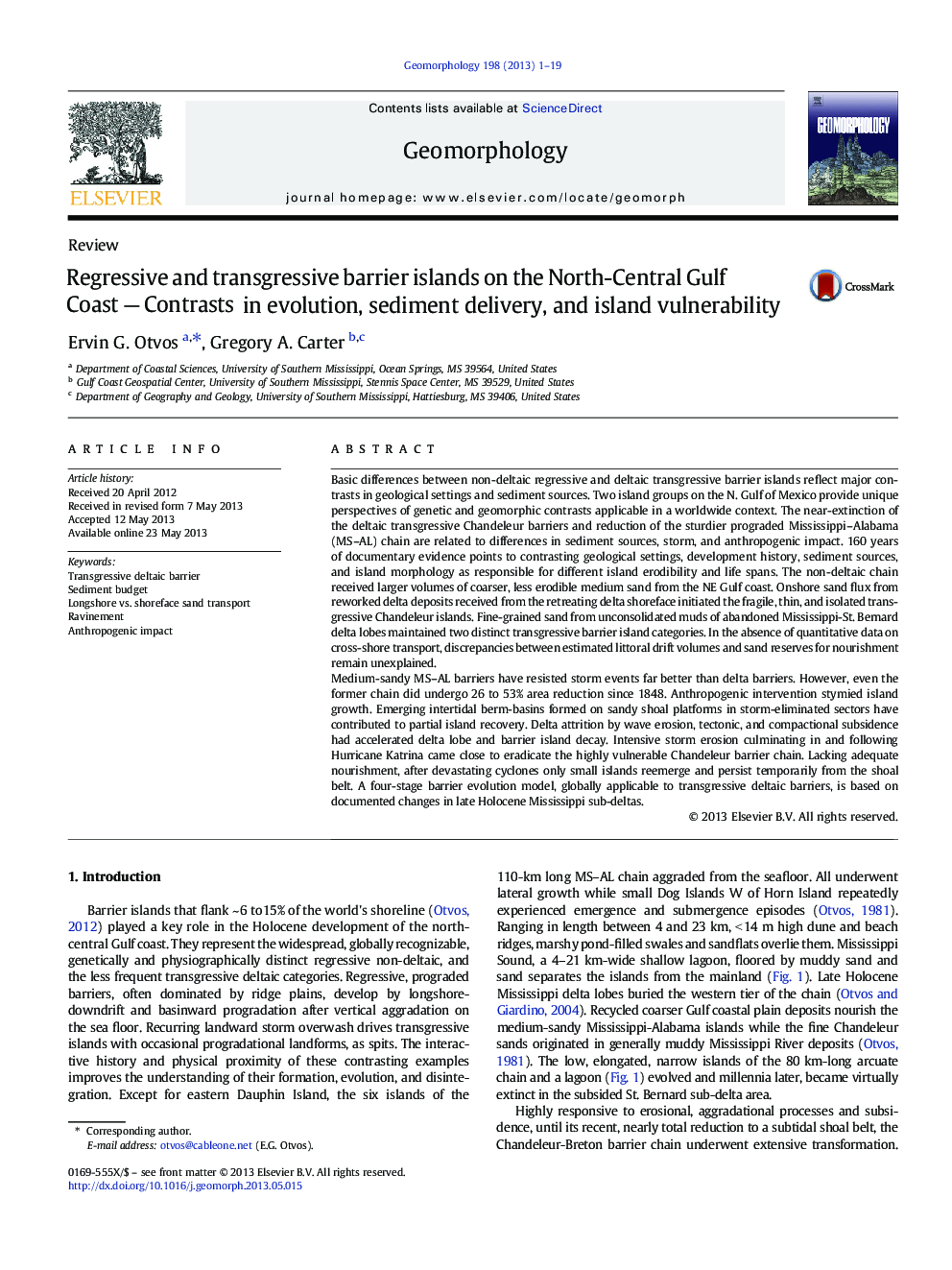| کد مقاله | کد نشریه | سال انتشار | مقاله انگلیسی | نسخه تمام متن |
|---|---|---|---|---|
| 4684739 | 1635451 | 2013 | 19 صفحه PDF | دانلود رایگان |
• Sediment types, volumes, hydrodynamics, morphology define differences in barriers.
• Different vulnerability and development histories; two major barrier categories
• Transgressive delta barriers overlie two or more Holocene ravinement surfaces.
• Different storm impact: prograded regressive and deltaic transgressive barriers
• Proposed 4-stage model of deltaic transgressive barrier island development
Basic differences between non-deltaic regressive and deltaic transgressive barrier islands reflect major contrasts in geological settings and sediment sources. Two island groups on the N. Gulf of Mexico provide unique perspectives of genetic and geomorphic contrasts applicable in a worldwide context. The near-extinction of the deltaic transgressive Chandeleur barriers and reduction of the sturdier prograded Mississippi–Alabama (MS–AL) chain are related to differences in sediment sources, storm, and anthropogenic impact. 160 years of documentary evidence points to contrasting geological settings, development history, sediment sources, and island morphology as responsible for different island erodibility and life spans. The non-deltaic chain received larger volumes of coarser, less erodible medium sand from the NE Gulf coast. Onshore sand flux from reworked delta deposits received from the retreating delta shoreface initiated the fragile, thin, and isolated transgressive Chandeleur islands. Fine-grained sand from unconsolidated muds of abandoned Mississippi-St. Bernard delta lobes maintained two distinct transgressive barrier island categories. In the absence of quantitative data on cross-shore transport, discrepancies between estimated littoral drift volumes and sand reserves for nourishment remain unexplained.Medium-sandy MS–AL barriers have resisted storm events far better than delta barriers. However, even the former chain did undergo 26 to 53% area reduction since 1848. Anthropogenic intervention stymied island growth. Emerging intertidal berm-basins formed on sandy shoal platforms in storm-eliminated sectors have contributed to partial island recovery. Delta attrition by wave erosion, tectonic, and compactional subsidence had accelerated delta lobe and barrier island decay. Intensive storm erosion culminating in and following Hurricane Katrina came close to eradicate the highly vulnerable Chandeleur barrier chain. Lacking adequate nourishment, after devastating cyclones only small islands reemerge and persist temporarily from the shoal belt. A four-stage barrier evolution model, globally applicable to transgressive deltaic barriers, is based on documented changes in late Holocene Mississippi sub-deltas.
Journal: Geomorphology - Volume 198, 15 September 2013, Pages 1–19
